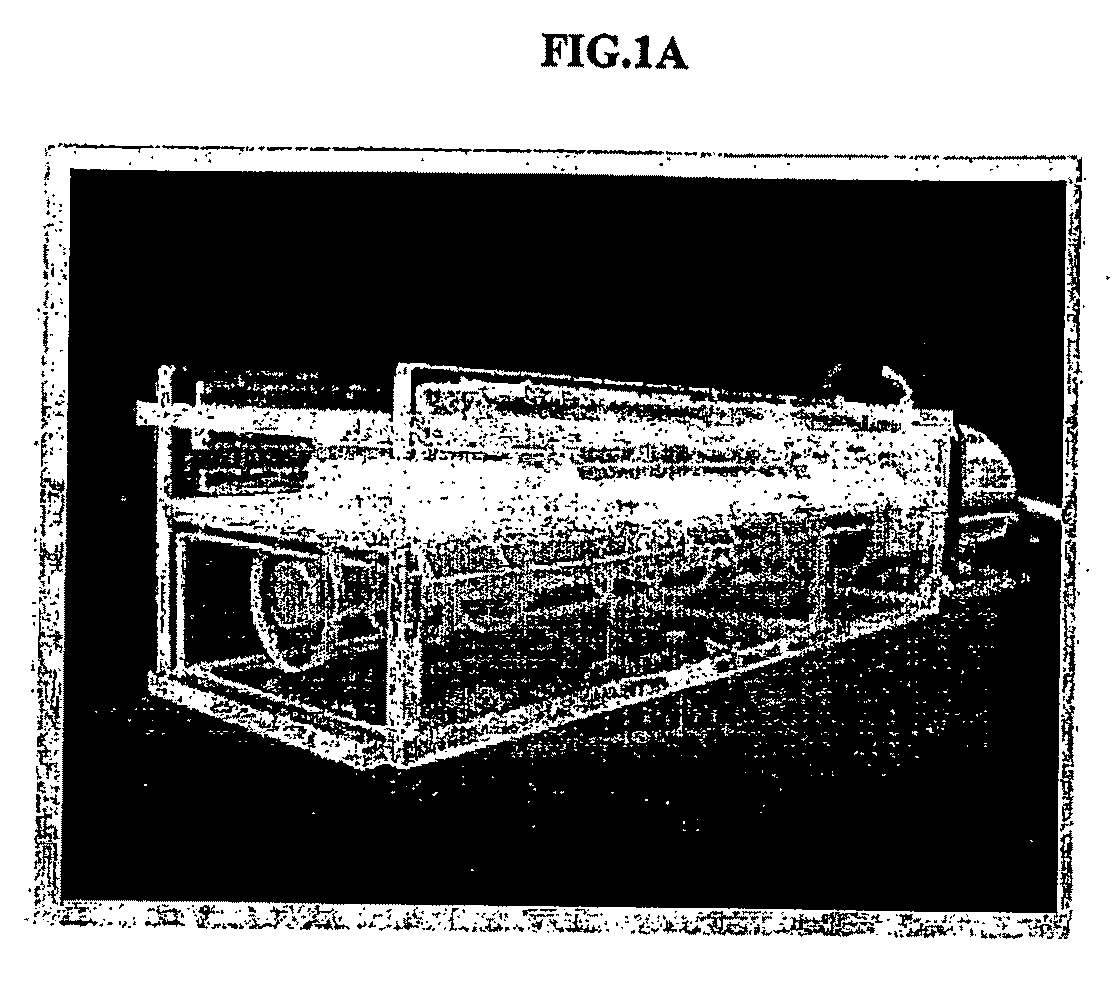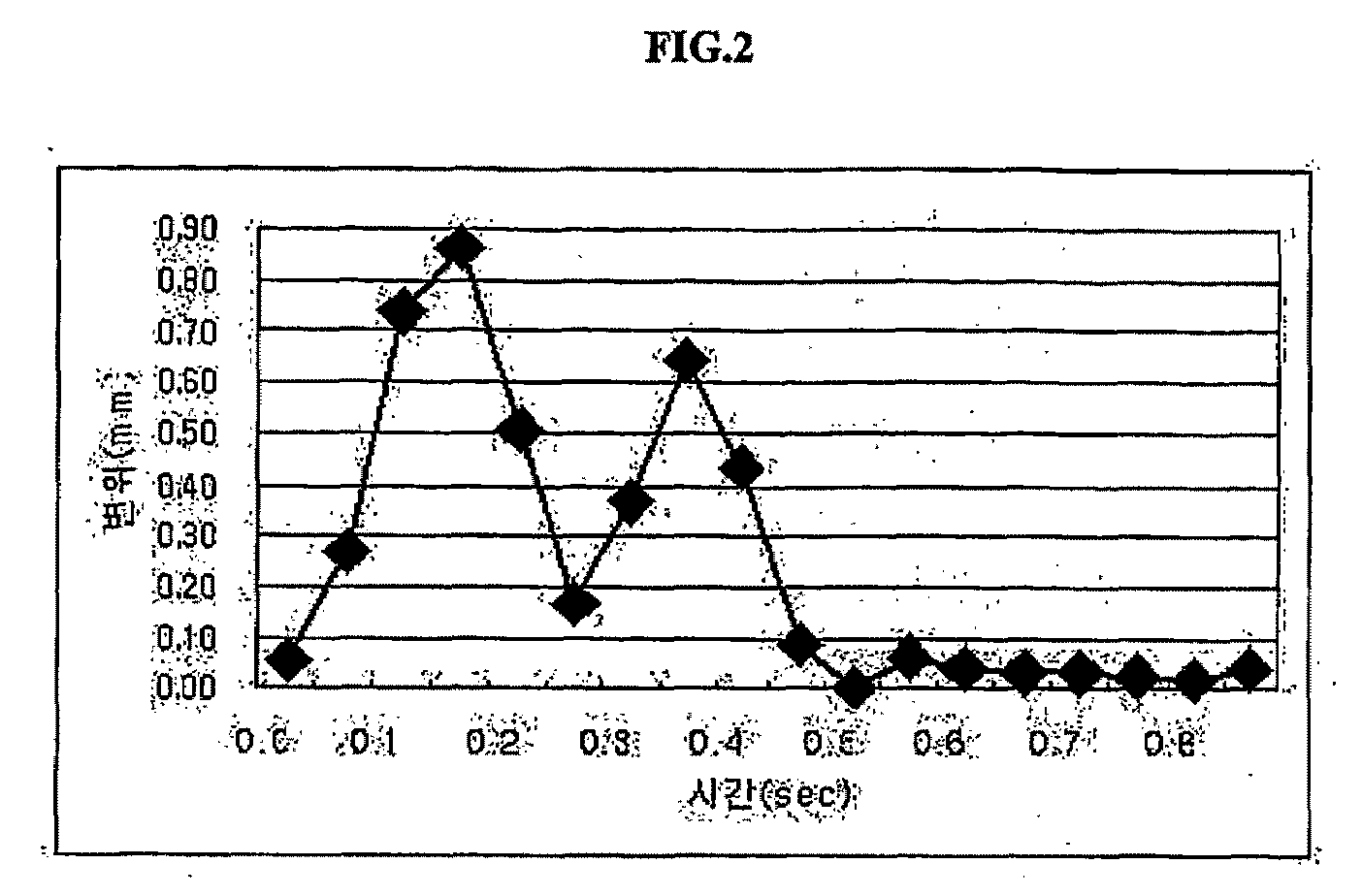Collagenous matrix with improved porosity and tensile strength and preparation method therefore by using mechanical stimulation system
a technology of which is applied in the field of preparing collagen with increased porosity and tensile strength by using mechanical stimulation system, can solve the problems of poor porosity of collagen solution, and unsatisfactory products obtained, so as to achieve good porosity and tensile strength, good porosity, good tensile strength
- Summary
- Abstract
- Description
- Claims
- Application Information
AI Technical Summary
Benefits of technology
Problems solved by technology
Method used
Image
Examples
example 1
Preparation of the Collagen Matrix with Increased Porosity and Tensile Strength
[0049]1-1: Manufacture of Mechanical Stimulator
[0050]As shown in FIGS. 1A and 1B, the mechanical stimulator includes two oval-shaped cams connected to the cam-shaft which are located in position corresponding to the rubber plate and loads the force up to the rubber plate by contacting the rubber plate. Rubber plates are located on a upper part of a housing box and have the same size as the bottom of culture vessel. While the cam-shaft rotates, the two cams load the physical forces upward the central portion of rubber plate bottom on which the culture vessel presents.
[0051]Thus, the collagen gel adhered to the culture vessel moves periodically. Because the culture vessel is fixed and adheres closely to the rubber plate, especially the edge of bottom of the culture vessel is fixed. The cycle of stimulation enforced on the bottom of the culture vessel was 72 rpm (0.8356 sec / cycle, 1.2 Hz). As shown in FIG. 2...
example 2
Preparation of an Artificial Skin with Increased Tensile Strength
[0055]To reconstruct SEs, keratinocytes were inoculated and added with mixture of DMEM and Ham's F12 (3:1), supplemented with 5% FBS, 0.4 μg / ml hydrocortisone, 1 μM isoproterenol, 5 μg / ml insulin, 10 ng / ml epidermal growth factor (Invitrogen Co., Carlsbad, Calif.), 1 ng / ml bFGF (Sigma Chemical Co., St. Louis, USA), and 25 μg / ml ascorbic acid. SEs were submerged for a day, and then air-liquid exposed for an additional 12 days. After culturing, SEs were fixed to produce a paraffin block, and stained by hematoxylon-eosin.
experimental example 1
Dry Weight of Collagen Matrix
[0056]The dry weight of samples (1 cm×1 cm) was examined after freeze dry. The dry-weight was measured and calculated as a percentage of total wet weight (FIG. 4).
[0057]As shown in FIG. 4, percentage dry weight of the stimulated group was 7.1±0.9% [dry weight of 31.3±5.7 mg (26 at first time, 30.1 at second time, 37.3 mg at third time), total wet weight of 442.8±72.2 mg (360.4 at first time, 495.3 at second time, 472.6 mg at third time)]. The percentage dry weight of the un-stimulated group was 5.1±0.2% [dry weight of 28.8±4.6 mg (25.6 at first time, 26.4 at second time, 33.9 mg at third time), total wet weight of 559.5±114.4 mg (481.4 at first time, 506.2 at second time, 690.8 mg at third time)]. Results showed that percentage of dry weight increased by mechanical conditioning (from 5.1%±0.2% to 7.1%±00.9%).
PUM
| Property | Measurement | Unit |
|---|---|---|
| tensile strength | aaaaa | aaaaa |
| porosity | aaaaa | aaaaa |
| diameter | aaaaa | aaaaa |
Abstract
Description
Claims
Application Information
 Login to View More
Login to View More - R&D
- Intellectual Property
- Life Sciences
- Materials
- Tech Scout
- Unparalleled Data Quality
- Higher Quality Content
- 60% Fewer Hallucinations
Browse by: Latest US Patents, China's latest patents, Technical Efficacy Thesaurus, Application Domain, Technology Topic, Popular Technical Reports.
© 2025 PatSnap. All rights reserved.Legal|Privacy policy|Modern Slavery Act Transparency Statement|Sitemap|About US| Contact US: help@patsnap.com



